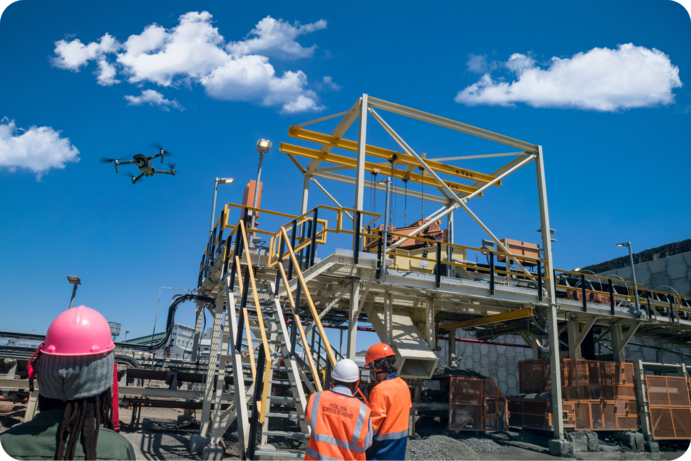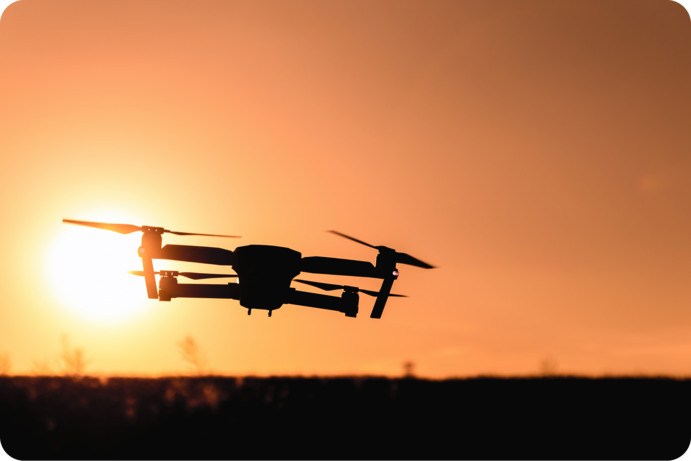
Complete Story
06/19/2025
Securing the Skies: How Louisiana’s Chemical Industry is Tackling Drone Threats
By: Michael Boykin
Director of Health, Safety and Security
When most people think about threats to critical infrastructure, they usually picture things like cyberattacks or hurricanes. But there’s a growing risk flying right above our heads, and it’s one we’ve been dealing with for years here in Louisiana. We focus on physical security a lot, but let's not forget about the airspace that’s under attack.
Drones, or unmanned aerial systems (UAS), are everywhere now. They’re cheap, easy to fly, and available to just about anyone. While they’ve opened doors for innovation in a lot of industries, they’ve also created serious drone threats to chemical plants, especially at high-risk facilities that make up Louisiana’s chemical manufacturing sector.
At the Louisiana Chemical Association (LCA), we’ve been hearing the same thing again and again from our members: drones are showing up over plant sites with no warning, no ID, and no accountability. Sometimes they’re flying close to sensitive equipment. Sometimes they’re hovering for long periods. And the scary part is, we usually don’t know who’s flying them or why. Whether it’s spying, testing boundaries, or just someone being reckless, this kind of unauthorized drone activity puts operations, workers, and surrounding communities at risk.
 Why Chemical Plants Are High-Value Targets for Drone Surveillance
Why Chemical Plants Are High-Value Targets for Drone Surveillance
Chemical plants aren’t just another industrial site. They’re classified as high-risk critical infrastructure for a reason. These facilities manage complex processes and materials that must be handled safely and securely at all times. A drone with a camera can easily capture details of equipment, control rooms, or layouts.
The frustrating part is that even when drones are spotted, there’s not much a facility can legally do about it. Federal law currently ties the hands of plant operators, preventing them from interfering with drone flights even when they’re clearly unauthorized and dangerous.
That’s why this issue can’t be ignored anymore and has been for years, but it will stop.
LCA’s Approach to Industrial Drone Detection and Mitigation
At LCA, drone detection and mitigation have become top priorities in our broader commitment to chemical industry security. We know the risks, and we’re not waiting for an incident to force change. This year, we hosted our Second Annual Cybersecurity Workshop, with drone detection and mitigation as one of the key focus areas. We brought in experts, shared real-world stories, and gave our members a space to talk openly about the challenges they’re facing.
Our goal with these workshops isn’t just to raise awareness it’s to build solutions. We’ve created a space where facility security officers (FSO’s), cybersecurity teams, emergency responders, and public officials can connect and collaborate. That’s a huge step forward compared to just a few years ago when this issue wasn’t getting the attention it deserved.
Supporting Drone Legislation to Protect Critical Infrastructure
As these threats of unauthorized drone activity increase, the federal government has not kept pace. FAA rules are focused on pilot licensing and airspace access, not on empowering state and local actors to respond when a drone poses an immediate danger. Current classifications treat drones similarly to traditional aircraft, creating myriad issues under federal law for those seeking to mitigate drone threats.
In Louisiana, we’ve decided that waiting for changes in federal regulations is no longer an option. HB 261 by Representative Jay Galle represents a first-of-its-kind attempt to create a workable, state-level framework to address the real-time threats posed by malicious or suspicious drones. The bill seeks to provide law enforcement and emergency responders with the tools they need to act swiftly and decisively when a drone threatens public safety, industrial operations, or emergency response activities. The ultimate goal of this legislation is to lay the groundwork for a joint taskforce between Louisiana State Police and local sheriffs that will enable a rapid, meaningful response to drone threats. Over time, the vision is to expand this effort to include direct industry partnerships and on-site mitigation capabilities at every critical facility.
Rep. Galle’s HB 261 is an excellent step towards addressing this pressing issue and dealing with the serious gap in current law that leaves Louisiana’s critical infrastructure vulnerable. We are pleased to report that on June 5th, HB 261 made it through the Louisiana House and Senate and was sent to Governor Landry for executive approval. In the absence of regulation at the federal level, Louisiana is stepping up. We’re proud to be part of this important effort, and we’re committed to building a model that other states can follow as this challenge continues to grow.
 Looking Ahead: Staying Ahead of Evolving Drone Security Threats
Looking Ahead: Staying Ahead of Evolving Drone Security Threats
Technology will keep advancing, and the threats will keep evolving. We have to stay ahead of them. That means investing in detection systems, updating our response protocols, and changing laws that haven’t kept up with the times.
This isn’t just an issue for plant managers or cybersecurity teams. It’s something that affects the safety of our workers, the resilience of our communities, and the future of critical infrastructure protection in Louisiana.
We’re doing everything we can but we need others to join us. If you’re part of this industry, or you care about protecting critical infrastructure, now’s the time to get involved.
Because this isn’t just a drone issue. It’s a safety issue. A security issue. A Louisiana issue that needs to be fixed and we at LCA are committed to being part of the solution.



